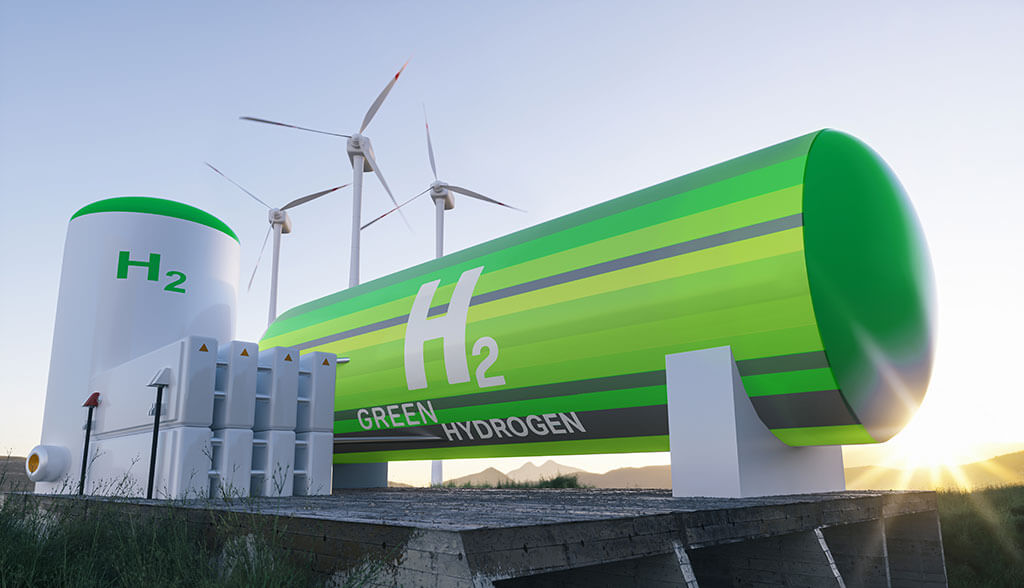The energy landscape is undergoing a profound transformation in the pursuit of a cleaner and sustainable future, with green hydrogen emerging as a key player in this paradigm shift. As all the nations around the world intensifies their efforts to mitigate climate change, the importance of green hydrogen in transforming Mother Earth cannot be neglected. In this blog, let’s explores the technical particulars and advanced aspects of the magic fuel- green hydrogen which is shedding light on its potential to revolutionize the energy sector and significantly reduce carbon emissions.
What is Green Hydrogen?
Hydrogen, as an element, is abundant, but its widespread industrial production has traditionally relied on fossil fuels, resulting in carbon emissions. Green hydrogen, on the other hand, is produced through a process called electrolysis, which involves splitting water into hydrogen and oxygen using electricity. The crucial aspect that differentiates green hydrogen from other forms is the source of this electricity- it is generated from renewable sources such as wind, solar, or hydropower.
Although hydrogen is a plentiful element and it has historically been produced widely in industry using fossil fuels, which has led to carbon emissions. On the other hand, GH2 is created by an electrical process known as electrolysis, which divides water into hydrogen and oxygen. The source of this renewable electricity sources like solar, wind, or hydropower—is what sets it apart from other forms of hydrogen.
Currently, less than 1% of the yearly total produced hydrogen is “green,” but as the infrastructure required to produce it is expanded and production costs continue to decline, this percentage is expected to rise.
Why is Green Hydrogen Important?
Since it is challenging to eliminate emissions from some hard-to-abate sectors of the economy, experts believe that it will be crucial to achieving the objectives of the Paris Agreement. The top three industries, transportation, and electricity production are the primary culprits that cause global warming. The production of emission caused by electricity and transportation can be reduced by green hydrogen, however, the remaining 15% of the economy, which includes shipping, aviation, steel etc., it is hard to decarbonise because these industries need high energy density fuel or intense heat. Thus, here the role of green hydrogen comes into the surface as a boon.

Charting a Greener Course: Green Hydrogen’s Potential for a Clean Future
- Zero Emissions Fuel: Green hydrogen production is an essential weapon in the fight against climate change because it produces no greenhouse gases or other pollutants. It provides a truly clean alternative to conventional hydrogen fuel, which frequently use fossil fuels and release harmful carbon dioxide.
- Target Hard-To-Abate Industries: Green hydrogen can be used as a clean energy source in sectors that primarily rely on fossil fuels, such as chemicals, steel, aviation, and shipping. Carbon emissions in these sectors can be greatly decreased by switching to green hydrogen-based fuel.
- Carbon Capture and Utilisation (CCU): The Green hydrogen production can have even greater environmental benefits when combined with CCU technologies. Carbon dioxide (CO2) that is released during the production of hydrogen can be captured and stored using CCU, keeping it out of the atmosphere, thus, saving the environment.
- Enhancing Energy Security: By offering a means of energy storage and transportation as well as a means of diversifying energy sources, green hydrogen can enhance energy security. This is especially crucial as the world is trying to switch from fossil fuels to renewable energy sources.
- Transition of the Global Energy System: Green hydrogen has the potential to play a major role in moving the world’s energy system in the direction of a more renewable and sustainable future. For nations looking to lessen their dependency on fossil fuels and reach the aggressive climate targets set forth in the Paris Agreement, the fuel’s scalability and versatility make it a desirable choice.
- International Partnerships and Collaboration: Globally, all the countries want to pool resources, knowledge, and experience to create infrastructure and production techniques that are more affordable, green hydrogen offers chances for international partnerships and collaboration. By collaborating, green hydrogen technology may be implemented more swiftly and affordably, making it more widely available.

Conclusion:
To sum up, it is a lighthouse which is pointing the way toward a more environmentally friendly future and has enormous promise as a sustainable energy source. The advantages in terms of sustainability and adaptability are indisputable, shining a bright light on our future even as obstacles like cost and infrastructure loom large. Instead, let us march forward, fuelled by the promise of a green and sustainable future, where we leave behind a legacy for the coming generations. Together, let us embrace the transformative power of the most powerful fuel- green hydrogen and write a new chapter in the story of shifting to a sustainable world where climate change issue is a far-off dream.








